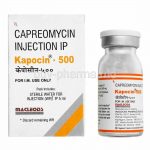
Contents
- 1 Carotid Artery Disease
- 1.0.1 Causes of Carotid Artery Disease
- 1.0.2 Risk Factors for Carotid Artery Disease
- 1.0.3 Symptoms of Carotid Artery Disease
- 1.0.4 Diagnosing Carotid Artery Disease
- 1.0.5 Treatment for Carotid Artery Disease
- 1.0.6 Prognosis of Carotid Artery Disease
- 1.0.7 Complications of Carotid Artery Disease
- 1.0.8 Preventing Carotid Artery Disease
Carotid Artery Disease
The carotid arteries provide blood supply to the head. There are two common carotid arteries, located on each side of the neck, that divide into the internal and external carotid arteries. The external carotid artery provides blood supply to the scalp, face, and neck while the internal carotid artery supplies blood to the brain.
Narrowing the internal carotid artery may decrease the blood supply to half of the brain. This narrowing, called atherosclerosis, occurs due to plaque accumulation on the artery wall. Plaque starts as a soft, waxy collection of cholesterol and triglycerides but over time hardens and calcifies. It often occurs where the internal and external carotid arteries split.
As the carotid artery further narrows, the pressure increases. This may cause plaque rupture and blood clot formation. A large clot may completely block the artery or smaller clots and bits of plaque may travel into smaller arteries within the brain and disrupt blood supply.
The diagnosis of carotid artery disease is usually made when a stroke, transient ischemic attack, or a bruit is found on physical examination. Otherwise, the narrowing carotid artery does not cause symptoms.
Causes of Carotid Artery Disease
Carotid artery disease occurs due to damage to the inner lining of the artery. This is associated with risk factors such as smoking, high blood pressure, high cholesterol levels, and poorly controlled diabetes. These factors may cause minor damage to the artery walls, leading to inflammation and plaque formation.
Over time, plaque may grow and narrow the artery lumen, increasing pressure and blood turbulence, causing more arterial wall damage and plaque formation.
Risk Factors for Carotid Artery Disease
Risk factors for carotid artery disease are the same as those for diseases associated with artery narrowing elsewhere in the body, including heart attack, stroke, and peripheral artery disease.
At-risk individuals include smokers, those with high blood pressure, high cholesterol, poorly controlled diabetes, a family history of atherosclerosis, and advanced age. Metabolic syndrome also increases the risk.
Symptoms of Carotid Artery Disease
Carotid artery disease itself has no symptoms. Symptoms only appear when blood flow to the brain is decreased, resulting in a transient ischemic attack or stroke.
A transient ischemic attack is a stroke-like group of symptoms that resolve on their own. Symptoms may include weakness or numbness on one side of the body and face, difficulty with speech, loss of vision, loss of balance, or confusion.
Signs and symptoms of a stroke are similar to a transient ischemic attack but permanent without treatment.
Any stroke or transient ischemic attack symptoms should be considered a medical emergency, and emergency medical services should be activated.
IMAGES
Diagnosing Carotid Artery Disease
A doctor may evaluate the carotid arteries as a potential cause of stroke. Ultrasound is commonly used to determine if carotid artery narrowing is present. Doppler technology helps measure blood flow and velocity.
If carotid artery disease is detected, angiography may be done to show artery anatomy. Angiography can be performed using a catheter or using CT or MR angiograms.
Treatment for Carotid Artery Disease
Treatment for carotid artery disease varies for each patient. Medical treatment is recommended if the carotid artery is less than 50% narrowed. Surgery is an option for patients with greater narrowing.
Possible treatments include antiplatelet therapy. Aspirin is the first line of medication, followed by a combination of dipyridamole/aspirin or clopidogrel. Surgery options include carotid endarterectomy and carotid angioplasty with stenting.
Surgery is recommended for symptomatic patients with more than 70% narrowing. Asymptomatic patients with more than 60% narrowing are controversial for surgery.
Surgery is not recommended for patients with completely blocked arteries or those who have already suffered an irreversible stroke.
Prognosis of Carotid Artery Disease
Many individuals have narrowed carotid arteries without symptoms. The prognosis depends on factors such as age, neurologic status, underlying conditions, and degree of narrowing.
Treatment aims to reduce the risk of stroke. For patients on antiplatelet medication with proper blood pressure, cholesterol, and diabetes control, the risk of stroke after 2 years can be as low as 11%. Surgery can further decrease the risk, but there are associated risks with surgery.
Complications of Carotid Artery Disease
Carotid artery disease can lead to transient ischemic attack and stroke. Brain cells cannot regenerate, so loss of blood supply can cause brain cell death.
Preventing Carotid Artery Disease
Prevention is vital for treating carotid artery disease. Lifestyle changes such as maintaining a healthy diet, weight, and exercise routine are important. Quitting smoking and controlling blood pressure, cholesterol, and diabetes can decrease the risk.
Medical review by Robert J. Bryg, MD; Board Certified Internal Medicine with subspecialty in Cardiovascular Disease
References:
Brott TG, et al. Stenting versus endarterectomy for treatment of carotid-artery stenosis. N Engl J Med. Jul 1 2010;363(1).
Marx J, et al. Rosen’s Emergency Medicine Concepts and Clinical Practice. 8th edition. Saunders. 2013.


